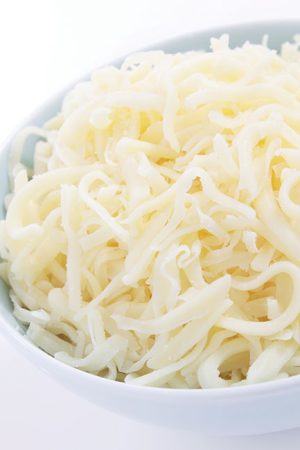
Skyrocketing food costs: The Pizza Chef
Diana Cline
Features Business and Operations Finance In the Kitchen Ingredients food costs The No. 1 ingredient that usually isn’t carefully portioned and isn’t accurately monitored – yet has the most impact – is cheese.
Photo © neillangan / adobe stock
The No. 1 ingredient that usually isn’t carefully portioned and isn’t accurately monitored – yet has the most impact – is cheese.
Photo © neillangan / adobe stock Gosh, it’s been a wicked past year-and-a-half, hasn’t it? I know I’m not the only one feeling the frustration of rising input costs: one longtime operator noted that his flour cost alone has risen 27 per cent.
We’ve seen our premium pepperoni increase as much as 88 per cent on one weekly invoice. It used to be that every other summer, because of an outbreak of salmonella or an improperly irrigated crop, we would find that the price of romaine lettuce was out of whack for a month. But for the past few months, it’s not just one item – it’s all of the items.
What gives? More importantly, what can be done about it?
I am definitely one to commiserate with y’all. Pre-pandemic, it’s likely that very few of us had increased our menu prices to reflect the hard input costs of our ingredients, labour, packaging, rent, utilities, insurance and licences, and equipment maintenance. And since then we’ve all been on this wild ride for too long now.
Some have reduced hours of operation. Some have closed their doors for good. One thing is for certain, it’s not been easy. It’s my hope that I can offer tangible action steps to help those of you who are in it.
My first piece of advice, that will carry forward with everything else, is “Inspect what you expect.” Review all of your invoices and make a list of your top 10 most expensive input items. These are likely also the items for which the prices have spun out of control. The idea here is, if you focus first on your heavy items, it’ll make the biggest positive impact, and then you can go after your next top 10 most expensive items. And so on.
The next thing to do with that list is to check your portion amounts for these items. For example, if your large pepperoni pizza is meant to have a 2.7-ounce portion, but you, or your team members, are actually topping 3.4 ounces on every large pepperoni pizza, you ought to know that.
Next, buy and use a good-quality digital scale. Weigh your most expensive ingredients, especially cheese and proteins. If you haven’t already, create a proper portion chart for your top 10 most expensive ingredients and toppings. Laminate it and post it where every team member will be reminded to pay attention to it. In all my years of operating a pizzeria, and also consulting other independent operators, the No. 1 ingredient in our establishments that usually isn’t carefully portioned and accurately monitored – yet has the most impact – is cheese.
Proper portioning is imperative at this time. Years ago I did a quick calculation that adding just an ounce more cheese to each pizza would cost an additional 15K every year. And that’s just an ounce over portion: double, triple or quadruple that figure as needed for all of your heavy-handed team members. I’ll say it again: buy and use a good quality digital scale.
Next, look at increasing prices of the items that are most out of balance with 2020 input costs. For us, it’s our proteins. Without warning, our premium-grade, dry-cured pepperoni went from $50/case to as much as $95/case within a few weeks.
Next, reach out and lean on your food reps. Ask them for suggestions on helping to keep your input costs consistent. There are different rebate programs available, but if you don’t ask, you won’t know. Stock up where possible, and order extra to take advantage of better pricing, when possible. Be careful with well-intentioned suggestions on products that are of lower quality. In my experience, if you’re known for top quality, then it’s best to stay there, and adjust accordingly, rather than adjust your level of quality to avoid increasing your menu prices.
Next, 86 items that are beyond repair. Some of your menu items may have ingredients that are just too difficult to keep in stock at this time. That may be because they’re fresh, or they require additional prep skill and time, or simply because of a supply-chain issue. You can always bring something back on the menu “for a limited time only” in the future.
Lastly, consider a menu price increase. Consider increasing all of your base pizza prices, increasing only the protein toppings or even adding a “surcharge” to every ticket. Each strategy has its own merits, and I won’t tell you what’s right for your operation. What is important is to communicate with your clientele and your team members.
In Canada, the inflation rate for July 2021 was an all-time high of 3.7 per cent, and while not everyone understands the math on how that’s calculated, most Canadians recognize that food prices have gone up, so it’s understandable that your menu prices must be adjusted as well.
Until next column, be kind, be healthy and be well.
Diana Cline is an award-winning pizza chef, a partner with Diana’s Cucina & Lounge in Winnipeg. In addition to creating award-winning recipes, Diana is a consultant to other pizzeria owner/operators in menu development, creating operational systems and marketing to help operators grow their business strategically. Contact her at diana@dianascucinaandlounge.com.
Print this page